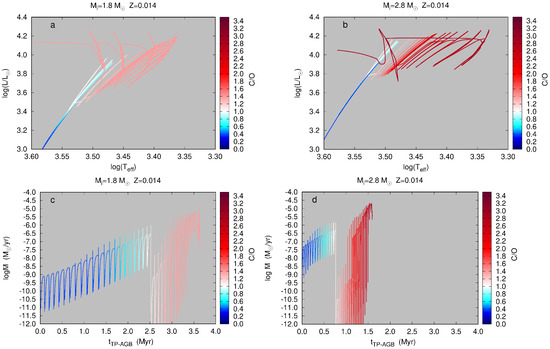


It turns out that the faint tail is almost insensitive to the history of star formation rate (SFR) in the parent galaxy, in contrast to the bright wing which may be more affected by the details of the recent history. In addition to this, the effects of different input quantities on the theoretical CSLF are analyzed. efficiency lambda and T_b() dred) aimed at reproducing the carbon star luminosity function (CSLF) in the LMC, using TP-AGB models with original metallicity Z=0.008. In this paper, we present and discuss the calibration of the two dredge-up parameters (i.e.

Extensive grids of TP-AGB models were computed by Marigo (1998a,b) using this scheme. Moreover, the final possible shut down of the process is predicted. Envelope integrations then allow determination of M_c() min as a function of stellar mass, metallicity, and pulse strength (see Wood 1981), thus inferring if and when dredge-up first occurs. In this approach, the usual criterion (based on a constant minimum core mass for the occurrence of dredge-up, M_c() min) is replaced by one on the minimum temperature at the base of the convective envelope, T_b() dred, at the stage of the post-flash luminosity maximum. Theoretical modelling is based on an improved scheme for treating the third dredge-up in synthetic calculations of thermally pulsing asymptotic giant branch (TP-AGB) stars. We investigate the formation of carbon stars as a function of the stellar mass and parent metallicity.


 0 kommentar(er)
0 kommentar(er)
